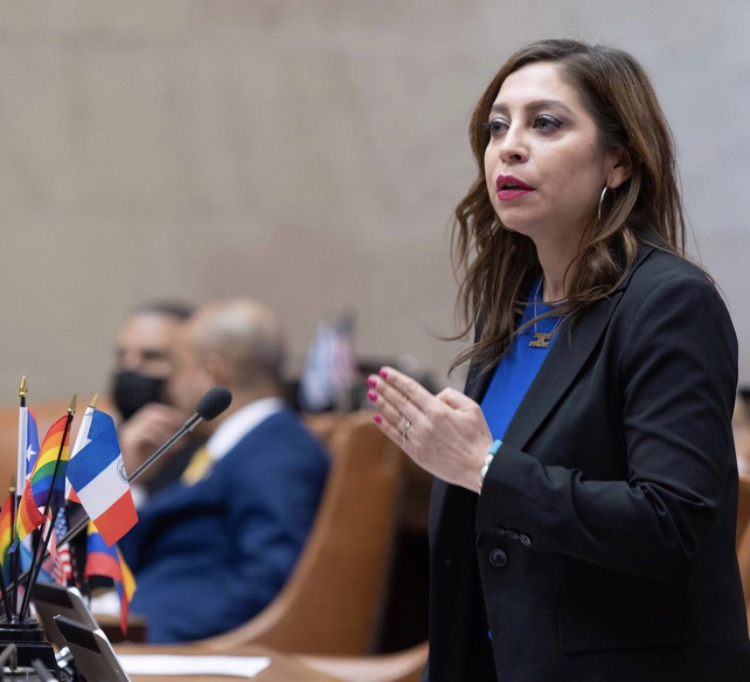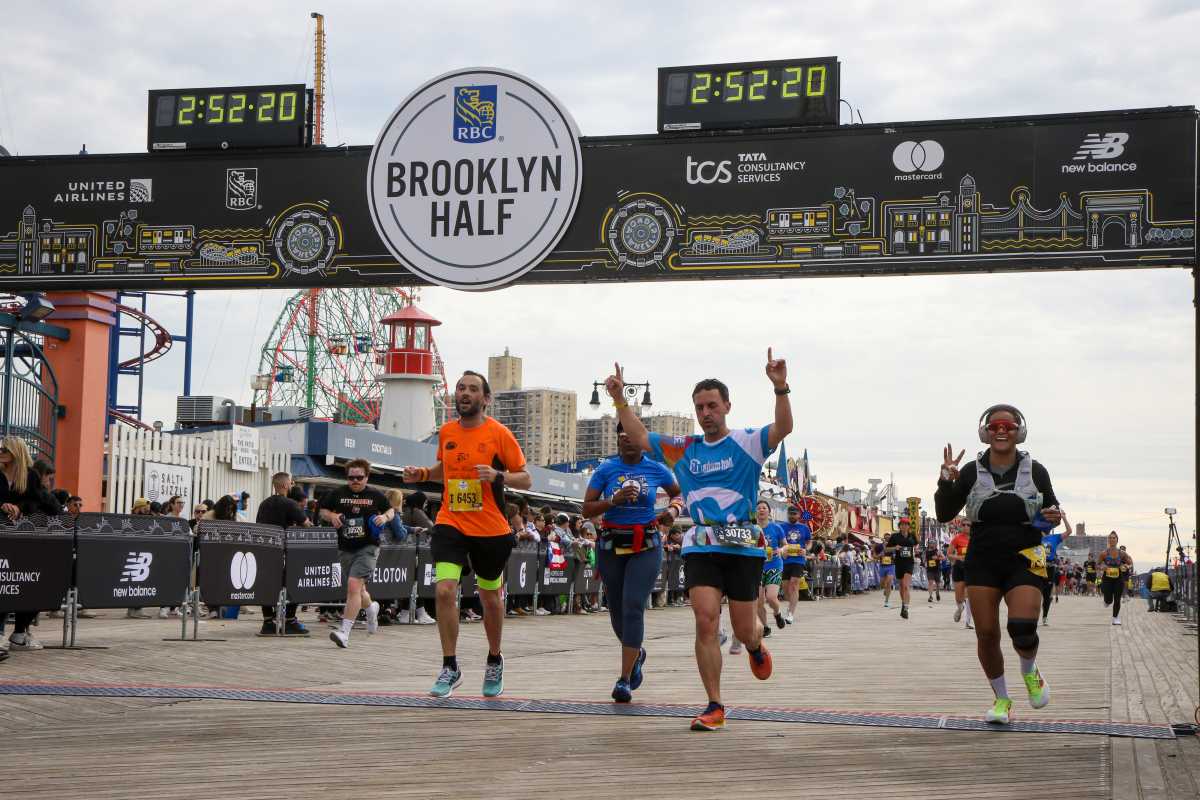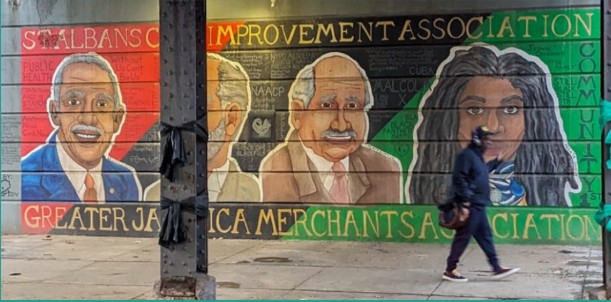By Skye H. McFarlane
Members of Community Board 1 tackled a jam-packed agenda Monday night at the World Trade Center Redevelopment Committee meeting. With issues ranging from the huge (the impending resurrection of the Lower Manhattan Development Corporation) to the highly detailed (a potential tax rebate for sound-proof windows), board members hashed out the topics with representatives from the Port Authority, the W.T.C. Health Registry and the City Council.
As board members learned in a meeting with Empire State Development Corporation President Avi Schick on March 30, rumors of the L.M.D.C.’s demise have been greatly exaggerated.
Technically, the shutdown of the agency, which was announced in July 2006, was not a rumor, but a fact. The agency declared that its job of planning for the new World Trade Center site and distributing $2.7 billion in federal grants to revitalize the neighborhood was nearly complete. Staff members began moving to other jobs, meetings became less frequent and community organizations struggled to discern who was in charge of one of the agency’s last responsibilities — the distribution of the remaining $45 million in community enhancement funds.
With Eliot Spitzer — who called the L.M.D.C. an "abject failure" during his gubernatorial campaign — taking office, it seemed that the L.M.D.C. would soon be gone for good.
The Spitzer administration, however, seems to have done an about-face on the rebuilding agency. One reason may be the money. Agency staffers told the L.M.D.C. board in February that the development corporation still has about $200 million in its coffers. In addition, the planning of the W.T.C. site continues to be a fluid process, with debates cropping up over the design of the Performing Arts Center, the ownership of Tower 5 and the fate of the Vesey St. staircase.
A rebuilding official told Downtown Express in February that the Dept. of Housing and Urban Development, which gives final approval to all L.M.D.C. expenditures, was against the corporation closing because it wanted to keep a watch on the money.
"Obviously, we think [the L.M.D.C.] should continue until they’ve completed their responsibility with overseeing the funding," HUD spokesperson Adam Glantz said Thursday after hearing that the agency would stay in business.
Whatever the reason, Empire State Development Corporation spokesperson Errol Cockfield confirmed Wednesday that the L.M.D.C. will be around through the duration of the Spitzer administration. The E.S.D.C. is the parent agency of the L.M.D.C.
"We believe the L.M.D.C. is still very necessary to the overall rebuilding of Lower Manhattan," Cockfield said. "They will be the voice of the governor in Lower Manhattan."
Gov. George Pataki treated the corporation much the same way after he created it at the end of 2001.
Cockfield said that the agency is currently ramping back up its operations, though it may never employ as many staffers as it did in the beginning.
With the L.M.D.C.’s revival in mind, the W.T.C. Committee on Monday passed a resolution reiterating C.B. 1’s desire for the development corporation to give the standing C.B. 1 chairperson a permanent seat on the L.M.D.C.’s board. Committee chairperson Catherine McVay Hughes said that if the L.M.D.C. is not going away, then it needs to be more open and responsive to the community’s needs.
"The community needs to know when the meetings are. They need to knowwhat is happening," Hughes said.
Board balks at J.P. tower
Despite mostly mum responses from the Port Authority, board members Monday expressed their displeasure at reports about a possible Tower 5 cantilever over Liberty Street Park.
"It would be inappropriate to discuss ongoing negotiations between the lawyers," said Quentin Brathwaite of the Port Authority when asked about W.T.C. Tower 5, which will occupy the Liberty St. site that currently houses the damaged Deutsche Bank building.
Brathwaite and Glenn Guzi were on hand to deliver the Port’s quarterly update on progress at the World Trade Center site. On Monday, however, the board was less interested than usual in the construction timetables. Instead, board members wanted to hear about the Port’s
potential plans to turn the planned 50-story office tower over to J.P. Morgan Chase.
The Port reps confirmed that the Port is in negotiations with J.P. Morgan regarding Tower 5, but they would say little else, citing a lack of knowledge and legal ramifications. A series of newspaper reports in the Wall Street Journal, New York Times and elsewhere,
however, have used anonymous sources to reveal details about the deal.
The reports say that because the Tower 5 site is too confined to build the large floorplates that investment banks require, J.P. Morgan would have to make five of its upper floors significantly wider than the rest of the building, creating what architects call a cantilever. The floors would jut out over a planned public park on Liberty St., as well as the new site of the St. Nicholas Greek Orthodox Church — casting deep shadows on both.
The Port reps said they could not confirm or deny any of the details from the newspaper articles. "Until there’s a deal in place, it’s premature to discuss any design elements," Guzi told the board members.
The committee balked at Guzi’s response. By invading the public park space, board members said, the proposed cantilever would likely violate the W.T.C. master plan that the community agreed upon. Therefore, they insisted, the community should have a say in the ongoing negotiations.
"Even if they are legal negotiations, if the negotiations have a clear effect on public policy and the community, then we should be a party to it," said board member Barry Skolnick, adding that once a private company has control of the site, it may be too late for the community to affect the design.
Board members repeatedly scolded the Port for hiding behind its lawyers and forcing the community to learn about the negotiations through the newspapers.
"I’m a lawyer and there are several lawyers on this board and we all know that ultimately, lawyers don’t make these decisions. Business
people make these decisions," said Bill Love.
It’s unusual for the committee to pass a resolution that members have not drafted prior to a meeting, but board members were so angered by the Port’s silence that they drafted and passed a resolution on the spot. It urged the Port to include C.B. 1 in all of its decisions regarding Tower 5. The resolution also expressed strong opposition to the cantilever idea. If the building did end up with a cantilever, committee members said, then the public should be compensated for the air space that the tower would be taking from the park. Board member Tom Goodkind, an accountant with a background in real estate, estimated that the air rights, if extended up to 50 stories, could be worth as much as $130 million.
A score of representatives from a local union, Local 32BJ S.E.I.U., also testified against the J.P. Morgan deal. The union, which represents security workers, commercial building staff and window washers, said that the banking firm uses a security contractor that treats its employees badly, paying low wages with inadequate benefits. Therefore, the union is strongly against the government giving J.P. Morgan any subsidies or special deals to relocate Downtown.
In addition to the shadows and the potential subsidies, some Downtowners are irked that J.P. Morgan wants to force-fit trading floors into Tower 5 when Towers 2 and 3 have been designed specifically to house trading operations. The two Church St. towers will come on line sooner than Tower 5, but they will be controlled by developer Larry Silverstein.
Kathryn Wylde, president of the Partnership for New York City, a civic organization representing the city’s largest corporations, said Tuesday that she had heard speculation that J.P. Morgan is trying to avoid negotiating with Silverstein. Wylde, however, thinks that the firm simply wants to control its own building.
"I don’t think it’s a Silverstein issue per se, it’s security," Wylde said following a city press conference at Silverstein’s 7 W.T.C.
Saying that bringing J.P. Morgan Downtown is "critically important for the future of Lower Manhattan," Wylde expressed confidence that the firm would work with the community on the tower’s design.
At the meeting, Port officials examined a sketch of what the cantilevered building might look like, drawn by an opponent of the plan, and did not comment on its accuracy.
Other W.T.C. news
The Port Authority announced at Monday’s meeting that it is busy relocating the loading dock entrances to the World Financial Center so that it can start construction on the underground tunnel that will connect W.F.C. to the World Trade Center transportation hub. For joggers and bikers, that means staying alert on the Hudson River Greenway, which has been rerouted to accommodate the loading operations.
As for the hub itself, PATH passengers in May will begin accessing the train station at a temporary entrance 75 feet south of the current entrance. Then, in December, riders will begin using a more permanent temporary entrance on Vesey St. The Vesey St. entrance will stay in place until the final, Calatrava-designed station opens for business in late 2009 or early 2010.
As for the much-debated fate of the Vesey St. "survivors’" stairway, the Port reps reiterated that the L.M.D.C. is in charge of deciding what to do with the 175-ton World Trade Center remnant. The Port, which will pay to dismantle or move the stairs from the future site of Tower 2, is simply hoping that the development corporation makes a decision soon.
"I need it to move as quickly as possible," said Brathwaite, who coordinates construction on the site.
Health Registry plea
Representatives from the W.T.C. Health Registry Monday night pleaded for Lower Manhattan residents to fill out their follow-up registry
surveys.
According to Dr. Mark Farfel of the registry, residents have not replied to their follow-up surveys as quickly as first responders and other groups affected by the Twin Towers’ collapse.
"Some people seem to feel that because they are not sick, their information is not as valuable," Farfel said. "But we need everyone’s information to understand the full effect."
Using written surveys, the registry tracks the physical and mental health of a group of people who lived or worked near the W.T.C. site between Sept. 11, 2001 and May 30, 2002. Farfel hopes to get at least 50 percent of the original 71,473 registry participants to fill out follow-up surveys. In addition to producing data about the health of 9/11 survivors, the registry also provides information about where people can seek care for W.T.C.-related health conditions. Farfel and community board members stressed that residents with 9/11-related problems should call the Bellevue Hospital W.T.C. Clinic at 212-562-1720.
Silent hopes
Residents of the buildings that overlook the World Trade Center site might receive some relief from the 20-hour-a-day construction noise emanating from the site.
Sayar Lonial, an aide to Councilmember Alan Gerson, announced Monday that the Councilmember plans to introduce a resolution to the City Council calling on the state legislature to create a dollar-for-dollar property tax rebate for Lower Manhattan landlords who install "acoustic," sound-buffering windows in their buildings.
"The councilmember, with much cajoling from Pat [Moore, a C.B. 1 member and resident of 125 Cedar St.], has finally drafted a resolution," Lonial said, drawing laughter from the board. If the state creates the tax rebate, Lonial said, Gerson would then seek to create a city law forcing the landlords to install the windows upon their tenants’ requests. The board lauded the idea, but urged Gerson to draft the law in such a way that landlords could not use the window improvements as a way to raise the rents on rent-controlled apartments.
With reporting by Josh Rogers


































